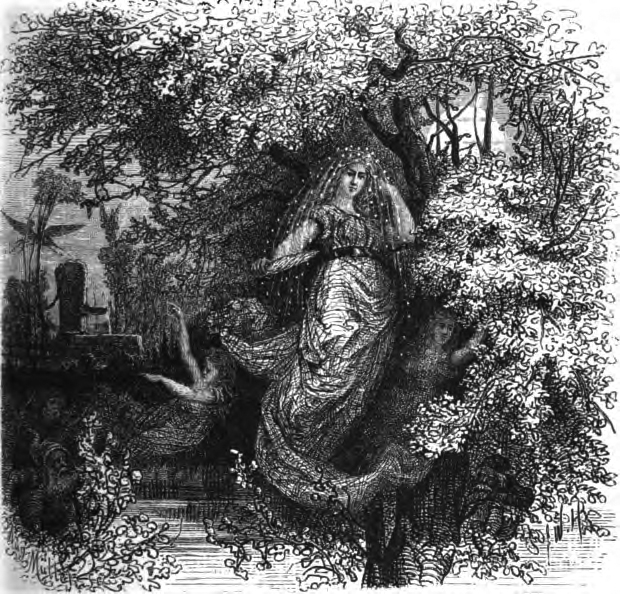 In the north of Germany Dame Perchta is known as Holda (it is arguable whether she is actually a northern incarnation or a "sister" of sorts). The images left "Holda, die gütige Beschüzerin [Holda, the good protectress]" from Nordisch-germanische Götter und Helden (1882) depicts a beautiful woman emerging from a forest is not uncommon when one takes into consideration of the souther Perchta (a mistress of the Wild Hunt). The patron of domesticated practices (most notably spinning), wild animals, and winter; she is an obscure and ancient character in the Teutonic mythos. She neither fills the role of better known goddess like Hel and Frigg completely, which leads one to question if Holda has pre-indo-European origins predating the Germanic pantheon.
In the north of Germany Dame Perchta is known as Holda (it is arguable whether she is actually a northern incarnation or a "sister" of sorts). The images left "Holda, die gütige Beschüzerin [Holda, the good protectress]" from Nordisch-germanische Götter und Helden (1882) depicts a beautiful woman emerging from a forest is not uncommon when one takes into consideration of the souther Perchta (a mistress of the Wild Hunt). The patron of domesticated practices (most notably spinning), wild animals, and winter; she is an obscure and ancient character in the Teutonic mythos. She neither fills the role of better known goddess like Hel and Frigg completely, which leads one to question if Holda has pre-indo-European origins predating the Germanic pantheon.
Qui credunt quod Diana, quae vulgariter dicitur fraw Percht, cum exercitu suo de nocte solet ambulare per multa sapatia terrarum [Diana who is commonly known as Fraw Percht is in the habit of wandering through the night with a host of women] (Tegernsee MS 434).
Holda becomes a literary archetype of sorts. In the collection of fairy tails as collected by the Grimm brothers. Best know is the story of Frau Holle, known by the same name. These stories follow a specific rubric (therefore making the tales sounds similar) that contain such elements spinning (in the older texts a spindle and the distaff, cf. Sleeping Beauty).
